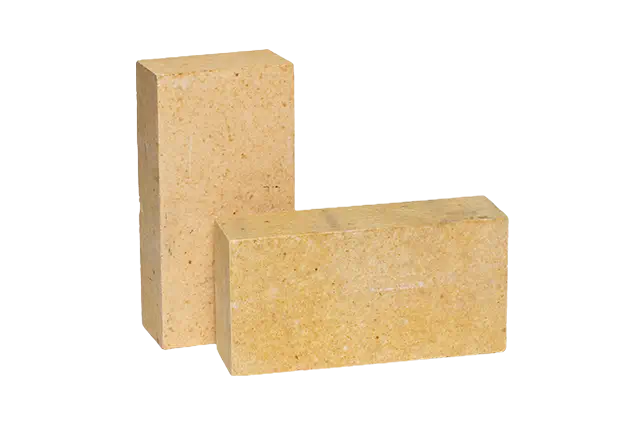
High Alumina Refractory Bricks are high-temperature resistant bricks made from bauxite or alumina with Al₂O₃ content above 48%, offering excellent strength, thermal stability, and resistance to chemical corrosion.
Chat on WhatsApp:
+8615038278221Email Us:
info@rsrefractories.com
High Alumina Refractory Bricks are widely used high-performance refractory materials with an alumina content ranging from 48% to 95%. Manufactured from calcined bauxite, alumina, and high-purity refractory aggregates, these bricks exhibit outstanding resistance to high temperatures, thermal shock, abrasion, and slag corrosion. Their dense structure and stable mineral phases, such as mullite and corundum, ensure excellent service life in demanding industrial environments. High Alumina Bricks are available in various grades and shapes to meet the requirements of steelmaking, cement, petrochemical, ceramic, and other high-temperature applications.
| High Alumina Refractory Brick Physical and Chemical Index: | ||||||
| Item | Properties | |||||
| RS-80 | RS-75 | RS-65 | RS-55 | RS-48 | ||
| Al2O3 (%) | 80 | ≥75 | ≥65 | ≥55 | ≥48 | |
| Refractoriness (°C ) | ≥1790 | ≥1790 | ≥1790 | ≥1770 | ≥1750 | |
| Bulk density (g/cm3) | 2.65 | 2.5 | 2.45 | 2.4 | 2.3 | |
| Softening temperature under load (°C ) | 1530 | ≥1520 | ≥1500 | ≥1470 | ≥1420 | |
| Reheating Linear changes Rate (%) | 1500°CX2H | 0.1 | 0.1 | 0.1 | 0.1 | 0.1 |
| 1450°CX2H | -0.4 | -0.4 | -0.4 | -0.4 | -0.4 | |
| Apparent porosity (%) | 22 | ≤23 | ≤23 | ≤22 | ≤22 | |
| Cold crushing strength (Mpa) | 55 | ≥50 | ≥45 | ≥40 | ≥35 | |
| Application | steel furnace, glass furnace, sodium silicate furnace, ceramic shuttle kiln, cement rotary kiln, blast furnace, electric furnace, blast furnace and reverberatory furnace. | |||||
High Alumina Refractory Bricks are widely used in:
Steel industry: blast furnaces, ladles, tundishes, reheating furnaces
Cement industry: rotary kilns, preheater towers, tertiary air ducts
Petrochemical furnaces
Glass melting furnaces
Ceramic kilns and electric furnaces
Incinerators and boilers
Non-ferrous metal smelting equipment
Comprehensive Refractory Product Range
We manufacture 3 main types of refractory materials — refractory castables, high alumina cement, and refractory bricks — covering 100+ industrial furnace types worldwide.
Certified Quality and International Standards Compliance
All batches undergo strict quality control. Products comply with ISO, ASTM, and GB standards, ensuring reliable performance in high-temperature industrial applications.
Annual Production Capacity of 130,000 Tons
With a large-scale capacity of 130,000 tons per year, we guarantee stable supply and on-time delivery for long-term and large-volume projects.
Exported to 120+ Countries and 1,000+ Projects
Our products have been successfully delivered to over 120 countries, supporting more than 1,000 industrial projects, including cement, steel, incineration, glass, and petrochemical furnaces.
20+ Years of Experience in Refractory Manufacturing
With over 20 years of experience, we understand real furnace conditions and deliver materials proven in long-term industrial operations worldwide.
Professional Technical Support and Free Samples
We provide technical assistance from material selection to installation guidance, with free samples available for testing and supporting 1,000+ projects globally.
Fill out the form to request a free, detailed quote.